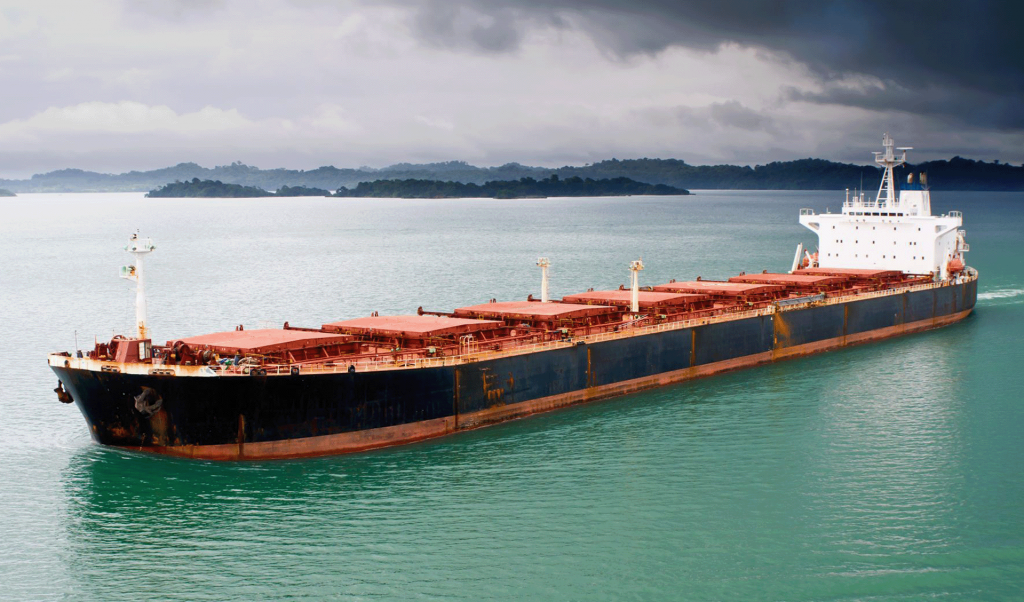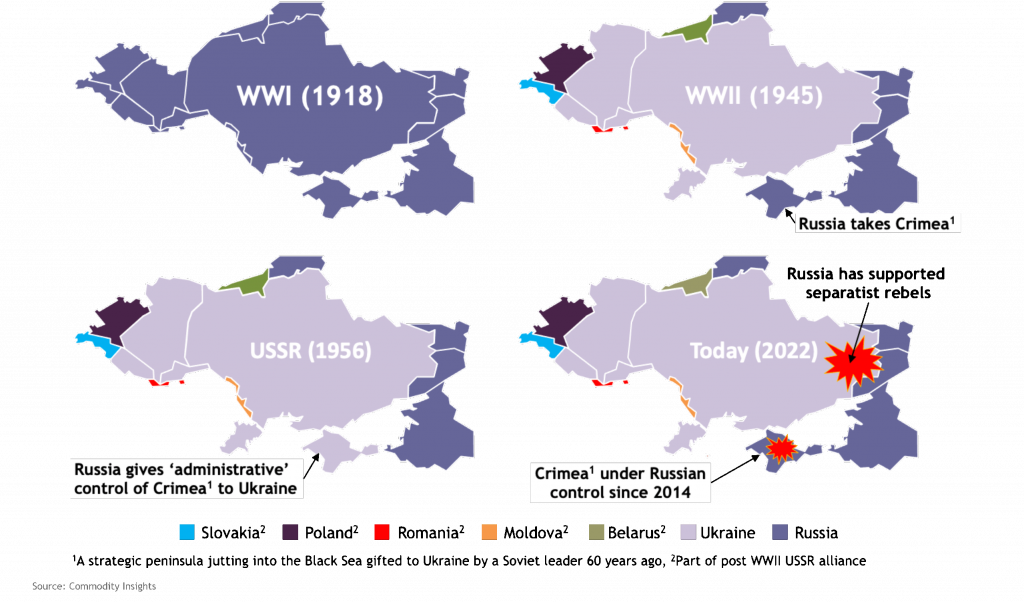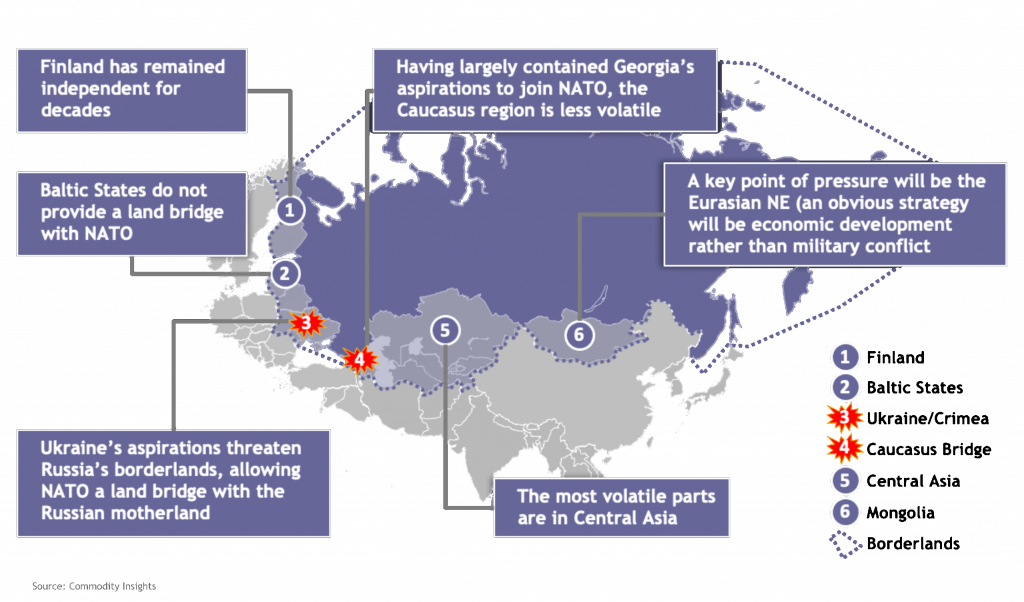
Russia - A Perspective on the invasion of Ukraine
A big country and an old empire with few natural borders – its once former empire are now sovereign states, seeking alignment with NATO.
Vladimir Putin’s forces stormed Ukraine and mobilised for an overwhelming assault on Kyiv as Russia unleashed one of Europe’s largest military offensives since the second world war. The reasons behind this offensive are complex and multifaceted and include history, psychology, longstanding grievances and grudges, including a bitter resentment of NATO. In understanding the current situation, history is extraordinarily important. Vladimir Putin, was a former KBG officer based in East Germany during the collapse of the Berlin Wall and witnessed the collapse of the Soviet Union and everything he was loyal to fall apart around him and the chaos which followed.
Russia and Ukraine have a chequered past
Ukraine was part of the Soviet Union for most of the 20th century, and much of its territory had been part of the Russian Empire before that. Ukraine declared its independence after the Soviet Union collapsed in 1991. At the time, a substantial portion of the Soviet nuclear arsenal was housed within Ukraine’s borders, and it agreed to transfer those weapons to Russia. In recent years, Ukraine’s democratically elected government has grown closer to Western Europe, causing the annexation of Crimea (the once Soviet ‘gift’ to Ukraine). Although cultural ties amongst Ukrainian’s to Russia have diluted since its independence there are pockets of Russian loyalists, especially in the epicentre of separatist Eastern Ukraine.

This conflict differs from the annexation of Crimea
The Crimean takeover in 2014 came as a surprise to the West, partly because of the way it was done. Russia already had a huge military presence in Crimea with its Black Sea naval base. This enabled the operation to be executed in a way that disguised what was really happening. It was also ready to execute because Russia had been preparing the ground to do that for many years in advance. This time both the Ukraine and the West have anticipated the pending offensive and took preemptive measures. There has also been remarkable coordination from the west to de-escalate the threat of war – but this has fallen short of addressing the core issues.
Understanding the Core Issues
The motivations of Russia’s president, Vladimir Putin, are now the biggest unanswered question of this geopolitical event. One prominent line of thinking is that Putin is looking to reclaim the territory lost after the dissolution of the Union of Soviet Socialist Republics (USSR), and the Russian leader’s own words appear to support this claim:
While much of the discussion about Russia’s grievances have been focused on gas transit (see our previous analysis), de-risking the significant volume of Russian gas transiting through the Ukrainian gas transport is important. Russia wants an uninterrupted flow of natural gas to European markets and if the Ukraine aligned with the European Union (EU) this could mean Russia looses its control of gas as a geopolitical deterrent to Europe.
Although Russia has invested in alternative routes (i.e. Nord Stream 2), delays in the certification of this pipeline appear almost certain as its one of a few sanctions that the west can impose on Russia. However the willingness of the EU to impose restrictions on Russia’s gas supply is limited given that Europe would be paying a premium for gas under alternate supply scenarios. Although LNG is one potential alternative, excess capacity is scarce, which will push prices higher. This is a super-bullish signal to LNG developers in the US, Qatar and beyond; as well as pipe options such as Azerbaijan, the East Mediterranean and Norway.
In spite of this, at the top of Putin’s list of issues is Ukraine’s desire to align itself with the European Union and more broadly developing closer ties with NATO. From Putin’s perspective this destabilises its ‘borderlands’ (the geographical buffer between Russia and the West once filled by the Warsaw Pact countries but has substantially diluted since the collapse of the Soviet Union). Ukraine’s participation in the western alliance system, particularly NATO is a red line for Russia and even limited military cooperation with the anti-Russian members of NATO is not taken lightly.
The risk of the current conflict escalating (beyond Ukraine) cannot be ruled out, with some speculating Russian action is pushing the Ukraine even closer to NATO and this could be the beginning of a new Cold War. Under this scenario (titled ‘The new great game’), Russia will turn it’s focus to its immediate borderlands (see below).

The launch of a ‘special military operation’ against Ukraine closely matches the ‘most likely’ scenario that Commodity Insights has been forecasting since early 2021. The events of the last week, though, also make the main alternative scenario increasingly plausible – a full-scale Russian invasion of Ukraine. At this point, de-escalation via diplomacy looks little more than a faint hope.
Whatever Russia’s ultimate goal, the heightened geopolitical tension is rippling feverishly out into the global economy and markets. We’ll publish specific analysis on the implications for individual sectors (coal, gas, metals) imminently.
